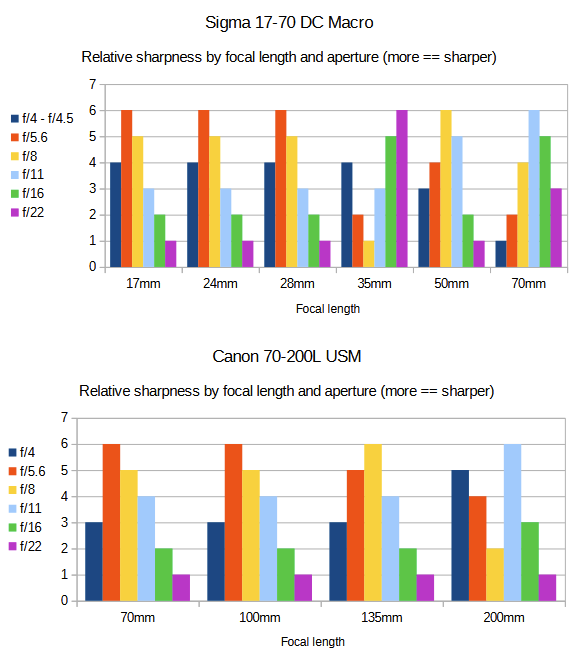I have only two lenses, neither of which are new (although the Canon is new to me):
- Sigma 17-70mm f/2.8-4.5 DC Macro
- Canon EF 70-200L USM
I have only one body and boy is it flabby! Oh wait, we’re talking cameras… It’s a Canon EOS T8i / 850D (24mp APS-C).
When I bought the Sigma ~15 years ago, it was generally regarded as a medium priced, flexible and optically decent lens. In other words, not the most expensive, but a good deal for the money. That’s been my experience although I’ve wished “lately” (i.e,. last five years or so) that it was sharper.
Or is it already?*
The 70-200 recently replaced a Canon EF 70-300mm f/4-5.6 IS USM zoom. When I bought the 70-300 it was generally regarded like the Sigma: Good (to very good) for the price. Not “L” quality, but not far behind.
I’ve noticed both lenses tend to softness at their respective long ends and the Sigma is a bit soft in the corners at widest. Neither is surprising, in fact they’re not uncommon.
The reasons I replaced the stabilized 70-300 with a non-stabilized 70-200:
-
Even on a crop sensor, 300mm is still too really short for birds. Plus, birds / wildlife are one area of photography where gear really does start to matter more. While I like looking at wildlife shots, I don’t have an interest in doing what it takes to get them.

-
I don’t shoot portraiture, sports, etc… I’m a landscape shooter so I’m usually on a tripod and in that context there’s not a lot of visual difference between 300mm and 200mm. I’ve also noticed focus-unrelated flaring around high-contrast features with the 70-300. I’m thinking that’s probably coating-related and the L lenses have better coatings.
-
The 70-200L has long been known as one of those “great deals” in lenses, so for $390 how could I lose? Actually it netted to about $270 after I sold the 70-300 back to MPB.
* Anyway, I decided to take a slightly more quantitative look at sharpness across the board, so to speak. I shot this test chart: ISO_12233-reschart.pdf (210.9 KB) at a distance so that fully zoomed-in it pretty much filled the frame. Shorter focal lengths were shot at that same distance. It was illuminated by direct sunlight, shot with auto-focus in aperture priority on a solid tripod with either a 2-second timer or a remote trigger. Since I was reviewing sharpness (and for convenience), I shot JPGs for this test.
I was surprised that both lenses were sharper slightly lower in the aperture range than I expected. I expected (and found) noticeable dulling from diffraction at f/16 and above but I was expecting the sweet spot to be maybe a stop higher than I saw.
Here’s a chart for each where I just relatively ranked each aperture by sharpness compared to other apertures at each focal length.

So basically, the sweet spot for both is around f/5.6 - f/8 wide and f/8 - f/11 zoomed.
Maybe armed with this knowledge (only 15 years late) I can “make” my Sigma a little sharper than it was… remains to be seen!